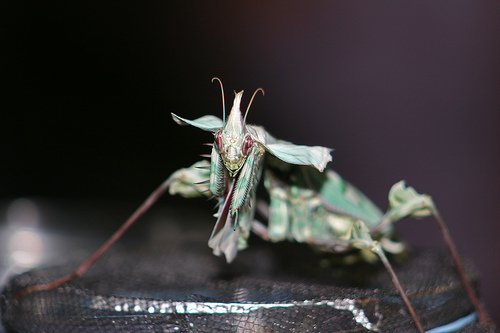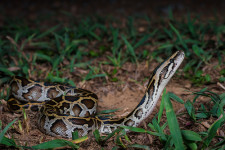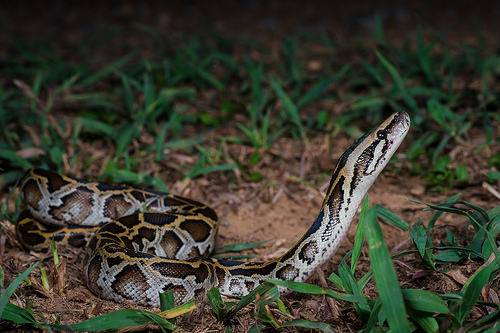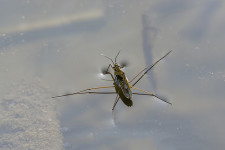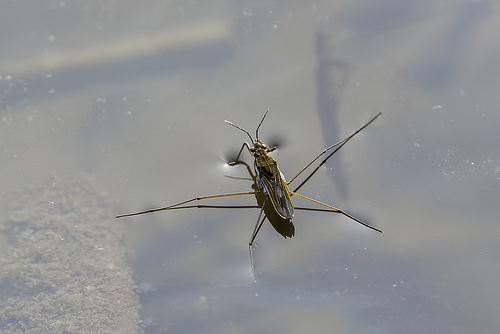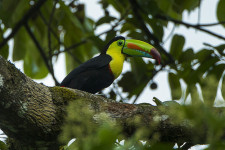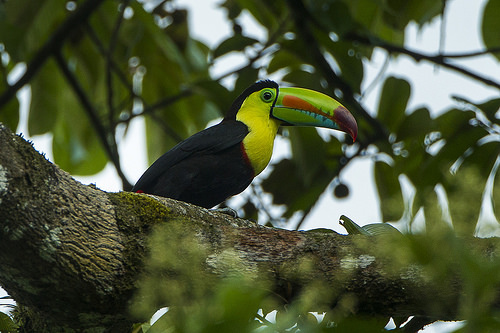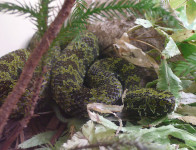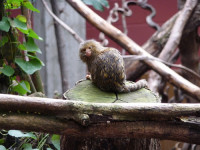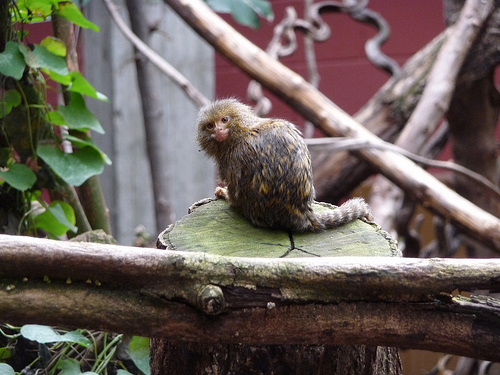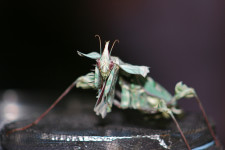
Devil’s flower mantises are dressed up all day, every day.
- The devil’s flower mantis is a species of large praying mantis, found among wildflowers of eastern Africa.
- The scientific name of the devil’s flower mantis is Idolomantis diabolica, the sole species of its genus, and it is from the family Empusidae, a family of mantises.
- Devil’s flower mantises grow to be roughly 10 to 13 centimetres (4 to 5 inches) in length, with the females generally larger than the males; and they are among the largest of all praying mantises.
- ‘Devil’s flower mantises’ are also known as ‘giant devil’s flower mantises’; and they have a lifespan of around one year.
- Adult devil’s flower mantises are mostly green coloured on their top side, while underneath, they are coloured green, white, red, black and purple, though some of these colours are not visible unless threatened.
A Male Devil’s Flower Mantis
Image courtesy of Steve Smith/Flickr
- While an adult can assume the appearance of a flower, a young devil’s flower mantis is brown and appears to be a dead leaf, causing it to be camouflaged in its surroundings.
- If threatened, a devil’s flower mantis will rear up its body and front legs, resulting in its hidden flaps to flare out and display vibrant colours, causing it to look somewhat like a flower; and the mantis often waves about, to frighten the predator.
- Devil’s flower mantises have a diet consisting of flying insects like butterflies, flies, beetles, and moths, and the prey is snatched from mid air by the mantis if the insects come too close.
- Female devil’s flower mantises produce a number of foam-like capsules of eggs, out of which between 10 and 50 nymphs hatch after approximately 50 days.
- Devil’s flower mantises are popularly sought after as exotic pets; however they do not thrive in captivity and are quite expensive.
Bibliography:
Devils Flower Mantis, 2015, Our Wild World, https://adlayasanimals.wordpress.com/2015/06/03/devils-flower-mantis-idolomantis-diabolica/
Devils Flower Mantis, 2016, Keeping Insects, http://www.keepinginsects.com/praying-mantis/species/devils-flower-mantis/
Idolomantis Diabolica, 2016, Wikipedia, https://en.wikipedia.org/wiki/Idolomantis_diabolica
Sain T, Devils Flower Mantis, n.d, Our Breathing Planet, http://www.ourbreathingplanet.com/devils-flower-mantis/





